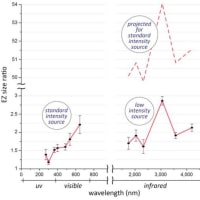Thomas Levy氏の著書に記載されている各種のウイルス・細菌に対するビタミンCの適用の記事の翻訳リストは、次のブログ記事にまとめてあります:
Thomas Levy ビタミンCによる感染症と毒物の治療の本の効果のまとめ
Levy p.105風邪
Thomas Levy、ビタミンCによる感染症と毒物の治療の本
Curing the Incurable: Vitamin C, Infectious Diseases, and Toxins (英語) ペーパーバック – 2011/8
治癒不可能なものを治す: ビタミンC、感染症疾患、及び毒素
Thomas E. Levy (著)
105
The Common Cold風邪 (Reversible and Preventable; Curable-? 可逆的、予防可能; 治癒可能?)
The common cold is an acute viral disease typically characterized by cough, Sore throat, and nasal symptoms (runny, difficult air passage).
一般的な風邪は、典型的には咳、喉の痛み、および鼻の症状(鼻水、困難な空気の通過)によって特徴付けられる急性ウイルス性疾患である。
This disease is also known as acute coryza, or upper respiratory tract infection.
この病気は、急性の鼻風邪または上気道感染症としても知られています。
Multiple viruses are capable of producing the common cold, and some of them do not produce an immunity, which Subjects an individual to possible repeated infections with the same virus.
多数のウイルスは風邪を引き起こすことができ、そのうちのいくつかは免疫を生じず、個々の被験者は同じウイルスで繰り返し感染する可能性がある。
As with most other viral infections, the medical textbook asserts that no antiviral agents are available for treating colds.
他のほとんどのウイルス感染と同様に、医学の教科書は、風邪の治療に抗ウイルス剤が利用できないと主張している。
The common cold is usually self-limited, with the most prominent symptoms characteristically persisting for about a week.
風邪は通常、自己限定的であり、最も顕著な症状は特徴的に約1週間持続する。
Not uncommonly, however, significant colds can seriously depress the immune system, and substantially deplete vitamin C stores in the body.
しかしながら、稀ではないが、重度の風邪は免疫系を著しく低下させ、体内のビタミンCの蓄積を大きく枯渇させる可能性がある。
Colds can lead to other superimposed infections or progress to additional organ involvement in the body as is seen in some cases of viral pneumonia, encephalitis, or meningitis.
風邪は、ウイルス性肺炎、脳炎、または髄膜炎のいくつかの症例に見られるように、他の重複感染または体内へのさらなる臓器関与につながる可能性がある。
Linus Pauling (1970), the only individual to ever win two unshared Nobel Prizes, probably generated more attention in advocating high doses of vitamin C for the common cold than for anything else he did.
ライナス・ポーリング(1970)は、2回の単独のノーベル賞を受賞した唯一の人であり、恐らく彼が行った他のどのようなものよりも、風邪に対する高投与量のビタミンCを推奨することに対するより多くの注目を生み出した。
It certainly brought him an enormous amount of criticism from members of the medical establishment.
それは確実に、医学界の他のメンバーからの膨大な量の批判を彼にもたらした。
The book that Pauling wrote regarding vitamin C's beneficial effects on the common cold stimulated numerous subsequent publications on the subject.
風邪に対するビタミンCの有益な作用に関してポーリングが書いた本は、この課題に関する数多くの引き続く出版物を刺激した。
Unfortunately, Paulings publication and many others did not look at dosing the common cold with the amounts of vitamin C that Klenner effectively used on so many different viruses,
不幸なことに、ポーリングの出版物と多くの他の人のものは、クレナーが非常に多くの異なるウイルスに対して使用したビタミンCの量による風邪への投与を見ていなかった。
As already noted in this chapter, many of the viral diseases cured by Klenner with vitamin C were far more serious and had much greater viral loads spread throughout the body than seen with the common cold.
既にこの章で述べたように、クレナーによりビタミンCで治療された多くのウイルス疾患は、はるかに重篤で、そして風邪で見られるよりも、はるかに多い量のウイルス負荷が体全体に広がっていた。
However, a severe cold probably has a comparable viral load to an uncomplicated case of the flu, and Klenner demonstrated that curing the flu required substantially more vitamin C than recommended by Pauling for the common cold, and at least some of the vitamin C had to be injected rather than just taken orally,
しかしながら、重篤な風邪は恐らく、(他のウイルス疾患を)合併していないインフルエンザの症例に匹敵するウイルス負荷を持っている、そして、インフルエンザの治療は、風邪に対してポーリングにより推奨された量よりもかなり多いビタミンCを必要とし、そして少なくとも幾らかのビタミンCは、単に経口服用するよりも注射しなければならないことをクレナーは示した。
Nevertheless, Pauling was able to show a positive effect of vitamin C on the common cold with doses far lower than those utilized by Klenner.
しかしながら、ポーリングは、クレナーが用いた投与量よりもはるかに低い投与量で、風邪に対するビタミンCのポジティブな効果を示すことができた。
106
Cathcart (1981), in describing his bowel tolerance method of determining the best doses of vitamin C for a given condition (discussed above in his treatment of AIDS), found that colds seemed to require much more vitamin C than was suggested in any published study before or since this observation.
カスカート(1981)は、ある条件(彼のAIDSの治療で前に議論した)に対するビタミンCの最上の投与量を決定することに関する彼の腸管耐容量法を述べる際に、風邪は、この観察より以前または以降に出版されたあらゆる試験で示唆されたビタミンCの量よりもはるかに多くの量を必要とするように思われることを発見した。
Specifically, Cathcart described a "mild cold" as typically requiring 30,000 to 60,000 mg of vitamin C to reach bowel tolerance.
特に、カスカートは、「緩和な風邪」は、腸管耐容量に達するためには30gから60gのビタミンCを普通は必要とすると述べた。
He also noted that a "severe cold" could require from 60,000 to more than 100,000 mg of vitamin C to reach bowel tolerance.
「重い風邪」は、腸管耐容量に達するためには60gから100g以上のビタミンCを必要とする可能性があるとも彼は述べた。
Depending upon the amount required for bowel tolerance, Cathcart recommended administering the vitamin in six to 15 divided doses daily to maintain optimal blood and body tissue levels.
腸管耐容量に必要な量に依存して、カスカートは、最適な血液及び身体組織濃度を維持するために、ビタミンCを6回から15回に分割して投与することを推奨した。
It should also be noted that Cathcart found that most normal adults without apparent infection or disease would tolerate from 4,000 to 15000mg of vitamin C before reaching bowel tolerance.
明白な感染または疾患のない大部分の正常な大人は、腸管耐容量は4gから15gであることをカスカートは見出したことも述べておくべきである。
In a review article Hemila and Douglas (1999) noted that more than 60 studies on the effects of vitamin C on the common cold had been published as of the time of their writing
ヘレナとダグラス(1999)のレビュー論文で、風邪に対するビタミンCの効果に関する60以上の研究が、かれらの論文作成の時点で出版されていたと述べた。
Douglas et al. (2000) reviewed 30 studies looking at the effects of oral vitamin C in treating the common cold.
ダグラス等(2000)は、風邪の治療における経口投与のビタミンCの効果を観察した30の試験をレビューした。
They concluded that although colds were not prevented by the doses of vitamin C given, a modest benefit of reduced symptom duration was seen, and some of the evidence indicated that larger doses resulted in even greater benefits,
投与されたビタミンCの投与量によって風邪は予防されなかったが、症状の期間の短縮という緩和な利益が観察され、そして高投与量はさらに大きな利益をもたらすことを幾つかのエビデンスは示したと彼らは結論づけた。
Hemila (1994) earlier reviewed 21 placebo-controlled studies examining the effects of vitamin C on the common cold performed since 1971.
ヘミラ(1994)は、1971年以降に実施された風邪に対するビタミンCの作用を検証する21のプラセボコントロール試験を、それよりも早くレビューした。
He concluded that vitamin C Consistently lessened cold symptoms but did not reduce the incidence of the common cold.
彼は、ビタミンCは一貫して風邪の症状を緩和したが、風邪の発生率は低下させなかったと結論づけた。
The daily doses in these studies were either equal to or somewhat in excess of 1,000 mg of vitamin C.
これらの試験の1日投与量は、ビタミンC 1000mgと同じか又はそれよりも多かった。
In terms of disease duration and severity of symptoms, an average of 23% reduction was observed.
風邪の期間と症状の重篤度の観点では、平均して23%の低下が観察された。
Gorton and Jarvis (1999) designed a prospective, controlled study to look at how effective vitamin C would be in both preventing and relieving symptoms of already contracted colds and flu.
ゴートンとジャルビス(1999)は、既に風邪とインフルエンザにかかっていた人の予防と症状の緩和における効果的なビタミンC投与を観察するための、前向きのコントロール試験をデザインした。
A test group was compared with a control group.
試験群は、コントロール群と比較した。
The test group regularly received 1000mg of vitamin C three times a day.
試験群は、ビタミンC 1000mgを1日3回規則的に服用した。
If cold or flu symptoms developed in the test group, 1,000 mg of vitamin C was immediately given hourly for the first six hours, and the maintenance schedule was resumed.
試験群で風邪またはインフルエンザの症状が発生したならば、1000mgのビタミンCを直ちに最初の6時間に1時間おきに投与し、そして維持スケジュールを再開した。
Relative to the control group, the cold and flu symptoms in the vitamin C-receiving test group were decreased by 85%.
コントロール群と比較して、ビタミンC服用試験群の風邪とインフルエンザの症状は、85%減少した。
This study is also significant in that the importance of a "loading dose" of vitamin C above and beyond a maintenance dose was recognized.
維持投与量よりも多いビタミンCの「負荷投与」の重要性が認識されたことでも、この試験は重要である。
Although the dose sizes were still well below those routinely used by Klenner and were given orally rather than intravenously, this study, when compared to most of the earlier vitamin C-cold studies, helps to independently establish the importance of acutely giving a larger dose of vitamin C.
投与量の規模はクレナーにより規則的に使用されたものよりもまだかなり低く、そして静脈投与ではなく経口投与であっが、この試験は、大部分の初期のビタミンCの風邪試験と比べると、高投与量のビタミンCを実際に投与することの重要性を独自に確立することに役立つ。
After the loading dose has been administered, one may proceed to a maintenance dose in order to achieve clinical benefit.
負荷投与量が投与された後、臨床的な利益を獲得するために、維持投与量を続けてもよい。
Karlowski et al. (1975) published a study from the National Institutes of Health that has long served to supposedly "debunk" the idea that vitamin C is of definite use in treating the common cold.
カルロヴスキー等(1975)は、ビタミンCが風邪の治療に確実に使用できるという考えが恐らく嘘であることを証明するために長い間仕事をしてきた、NIH国立衛生研究所から研究を発表した。
Hemila (1996), in analyzing the oft-cited results of Karlowski et al., found that the study actually showed a 17% decrease in the duration of colds in those patients given an additional 3,000 mg of vitamin C daily to a existing maintenance dose of 3,000 mg daily.
ヘミラ(1996)は、頻繁に引用されたカルロヴスキー等の結果を解析して、既存の維持投与量1日3000mgに対して、追加のビタミンC 1日3000mgを投与された患者では、風邪の期間が17%減少したことをその試験が実際に示したことを見出した。
Karlowski and his coworkers had dismissed this as being secondary to the placebo effect.
カルロヴスキーと共同研究者は、これをプラセボ効果によるものであると片づけた。
They concluded this because the placebo had a different taste from the vitamin C.
彼は、プラセボはビタミンCとは味が異なることが原因であると結論づけた。
Hemila points out that this placebo explanation is not likely valid since the decrease in symptoms very closely paralleled the decreases seen in other studies with non-detectable placebos.
ヘミラは、症状の低下は、検出不能なプラセボによる他の試験で見られる減少と非常に密接に平行しているので、このプラセボの説明は、無効であることを指摘した。
Also, the 17% improvement is very close to the average 23% improvement seen in the series of 21 placebo-controlled studies referred to by Hemila (1994).
また、17%の改善は、ヘミラ(1994)が参照した一連の21のプラセボコントロール試験で見られる平均23%の改善と非常に類似している。
Carr et al. (1981) also generated data consistent with the finding noted above.
カール等(1981)も、上記で述べた発見と一致するデータを得た。
They looked at the effects of vitamin C on the common cold, using identical twins as controls.
彼らは、同じ双子をコントロールとして使用して、風邪に対するビタミンCの効果を観察した。
It was concluded that the vitamin C was effective in "shortening the average duration of cold episodes by 19%."
ビタミンCは、「風邪の症状の平均期間を19%短縮する」効果があると結論づけた。
107
Murphy et al. (1974) looked at the effects of vitamin C in alleviating the symptoms of a virus that could cause cold-like symptoms in the marmoset, a primate susceptible to cold viruses of human origin.
マーフィー等(1974)は、人起源の風邪ウイルスにかかりやすい霊長類であるマーモセットに風邪様の症状を起こすことのできるウイルスの症状を緩和するビタミンCの効果を観察した。
The mean body Weight of the animals was 400 grams, and the vitamin C-supplemented animals received 100mg of vitamin C twice a day orally, which Would equate to approximately 35,000 mg daily for a 70-kilogram man.
その動物の平均体重は400gであり、そしてビタミンCを補給した動物は、100mgのビタミンCを1日2回経口投与した、それは70kgの人では1日約35gに等しいものであった。
The authors concluded that while the vitamin C did not prevent virus infection, it did delay the onset of disease, reduce clinical symptoms, and decrease the chances of death from the infection.
ビタミンCはウイルス感染を予防しなかったが、病気の始まりを遅くさせ、臨床症状を減少させ、そして感染による死亡の機会を減少させたと著者は結論づけた。
Edwards (1968) treated cats with feline rhinotracheitis, a type of viral cold, with vitamin C.
エドワード(1968)は、ウイルス性の風邪の1種の猫鼻気管炎ウイルスの猫をビタミンCで治療した。
A 1,000 mg daily dose of vitamin C was given intravenously until clinical recovery, and then 250mg daily oral doses were continued for a few days after recovery.
1日1000mgのビタミンCは、臨床的な回復まで静脈投与した、そしてその後回復後に、1日250mgの経口投与を2~3日続けた。
The average recovery time for the treated cats was 4.9 days compared to 13 days for the untreated controls,
治療した猫の平均回復時間は4.9日であり、未処置コントロールでは13日であった。
Povey (1969) also reported on the treatment of feline viral rhinotracheitis with vitamin C.
ポベイ(1969)も、ビタミンCによる猫鼻気管炎ウイルスの治療について報告した。
Although Povey used much smaller daily doses of vitamin C (100 mg) than Edwards, Povey was still able to assert that there was "some evidence" that these "high levels" of vitamin C were shortening recovery times,
ポベイはエドワーズよりもはるかに少ない1日投与量のビタミンC(100mg)を使用したのだが、ポベイは、これらの高濃度のビタミンCは、回復時間を短縮したという「幾つかの証拠」があると述べることができた。
Belfield and Stone (1975) reported on the vitamin C treatment of a Siamese cat that was very ill with rhinotracheitis.
ベルフィールドとストーン(1975)は、猫鼻気管炎ウイルスにより非常に具合の悪いシャム猫のビタミンC治療について報告した。
The initial dose of vitamin C was 8,000 mg intravenously (1,000 mg per pound of body Weight) in two divided doses.
ビタミンCの初期投与量は、静脈投与で8000mg(体重1ポンド当たり1000mg)を2回分割投与であった。
Two more 4,000 mg injections were given after the first day, and 2000 to 4,000 mg were also given orally daily in the cat's food.
初日の後に、さらに2回の4000mgの注射を行ない、キャットフードに入れて2000から4000mgの経口投与もした。
The cat recovered quickly, and the authors asserted that they had "similarly successfully treated about 100 cases" like this one.
猫は迅速に回復した、そして著者は、このような約100例を同じように治療に成功したと著者は述べた。
There is certainly no reason to believe that the viruses responsible for the common cold Would respond any less positively to the large doses of vitamin C used by Klenner for the other viral diseases that he successfully treated.
クレナーが治療に成功した他のウイルス疾患に対してクレナーにより使用された高投与量のビタミンCに対して、風邪の原因となるウイルスの反応が弱いと信じる理由は確かに存在しない。
If one wanted to recover from a cold in 72 hours or less, significant doses of intravenous vitamin C Would typically have to be part of the protocol.
もしある人が72時間以内に風邪から回復したいならば、通常は、高投与量の静脈投与のビタミンCが、治療計画の一部でなければならない。
A very light cold treated very promptly with bowel tolerance doses of vitamin C would also likely be cured in 72 hours or less.
腸管耐用量のビタミンCで非常に迅速に治療された非常に軽い風邪もまた、72時間以内に治癒するだろう。
However, once the viral load has been allowed to become substantially large, initial dosing should be intravenous in order to quickly get "ahead" of the virus.
しかし、一度ウイルスの負荷をかなり多くさせるのを許してしまうと、初回投与は、迅速にウイルスを出し抜くために静脈投与であるべきである。
While the literature does not directly assure that the common cold is curable with vitamin C, the indirect evidence would indicate that this is the case.
文献の投与量は、風邪はビタミンCで治療できることを直接的には保証していないが、間接的な証拠は、これは正しいことを示しているようだ。
The symptoms definitely show reversibility with adequate doses of vitamin C, and taking daily bowel tolerance doses of vitamin C should suffice in preventing most colds from ever being contracted.
適切な投与量のビタミンCにより症状は確実に可逆性を示す、そして1日の腸管耐容量のビタミンCの服用は、大部分の風邪にかかるのを予防するのに十分であるはずである。
A recently developed form of oral vitamin C encapsulated in liposomes is now demonstrating superior bioavailability and clinical response relative to intravenous vitamin C(see Chapter 5).
最近開発された形態の経口投与のリポソーム封入ビタミンCは、優れたバイオアベイラビリティを今示しており、臨床反応は、静脈投与のビタミンCに匹敵する。























